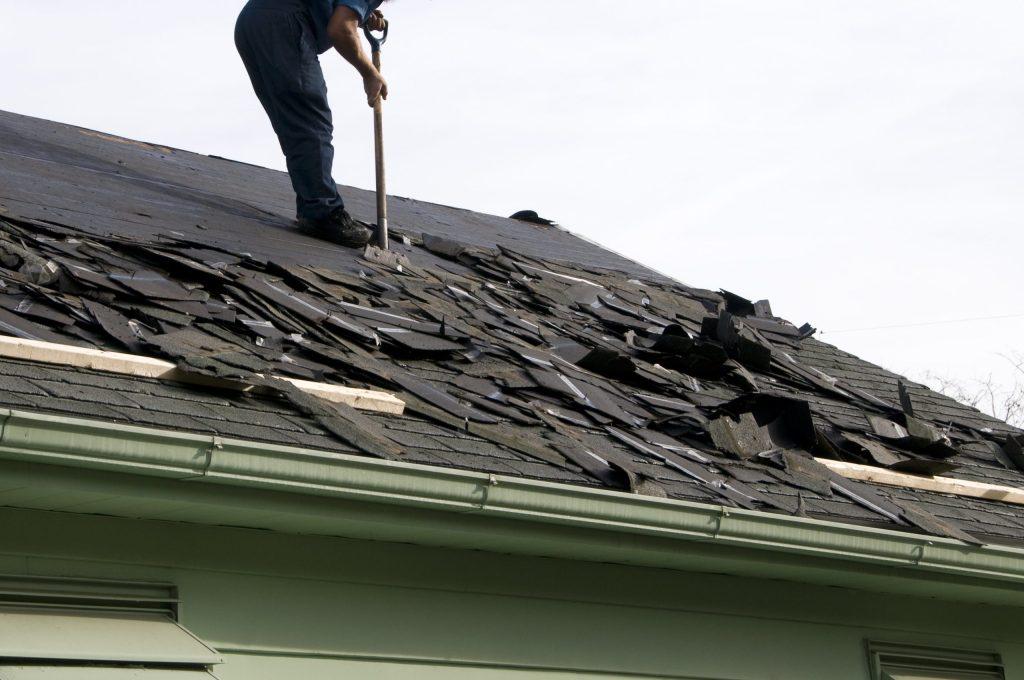Roof replacement is a significant home improvement project that can improve the aesthetics, functionality, and value of your home. However, one often-overlooked aspect of this endeavor is the disposal of old roof shingles. When the time comes to replace your roof, you might wonder, “How much does it cost to dispose of roof shingles?” In this article, we will explore the various factors that influence the cost of shingle disposal and provide insights into managing this aspect of your roofing project.

The Importance of Proper Shingle Disposal
Proper disposal of old roof shingles is not just a matter of convenience; it’s an environmental and regulatory concern. Shingles are made from various materials, including asphalt, fiberglass, and wood, and may contain contaminants such as tar and asbestos. Disposing of them improperly can have negative consequences for the environment and human health.
When old shingles are removed from your roof, they must be managed according to local regulations and best practices. This often involves recycling or reusing the materials when possible. Here’s what you need to know about the cost of disposing of roof shingles:
1. Amount of Shingles
The quantity of old shingles to be disposed of is a primary factor that affects the cost. Larger roofs with more extensive shingle coverage will naturally generate more waste, resulting in higher disposal costs. Roofing contractors typically calculate disposal costs based on the weight of the shingles, which is directly related to the amount.
2. Type of Shingles
The type of shingles on your roof plays a significant role in disposal costs. Asphalt shingles are the most common type used in residential roofing. They are relatively easy to dispose of, and many recycling facilities accept them. Other materials, such as wood, metal, or slate shingles, may require special handling and disposal methods, leading to higher costs.
3. Local Regulations
Local regulations and environmental laws impact how old shingles can be disposed of. Some areas have strict rules governing the disposal of roofing materials, requiring recycling or specific disposal methods. Non-compliance with these regulations can lead to fines and penalties, so it’s essential to adhere to them.
4. Recycling Options
Recycling old shingles is an environmentally responsible choice. Many recycling facilities accept asphalt shingles, as they can be repurposed into paving materials or used in road construction. Choosing to recycle your old shingles may incur additional costs, such as transportation fees to the recycling facility.
5. Disposal Methods
The method of disposal also affects the cost. If you opt for traditional landfill disposal, you may incur lower costs, but this method has a more significant environmental impact. On the other hand, recycling or reusing shingles is more eco-friendly but can be costlier.
6. Roofing Contractor Services
Roofing contractors often include shingle disposal in their services. They manage the removal, transport, and disposal of old shingles, which may be included in their overall project estimate. The cost can vary depending on the contractor’s practices and the specific disposal methods they employ.
7. Transportation
Transporting the old shingles from your property to the disposal or recycling facility incurs additional costs. The distance to the facility and the quantity of shingles being transported are factors that affect transportation costs.
Cost Estimates for Shingle Disposal
The cost of disposing of roof shingles can range from $1,000 to $2,500 or more, depending on the factors mentioned above. Smaller homes with standard asphalt shingles may fall on the lower end of this range, while larger homes with multiple roofing layers or specialty shingles may incur higher disposal costs.
It’s essential to discuss shingle disposal with your roofing contractor and obtain a detailed estimate that includes this aspect of the project. Be sure to ask about their disposal methods, recycling options, and compliance with local regulations.
Conclusion
How much does it cost to dispose of roof shingles? Disposing of old roof shingles is an integral part of the roof replacement process. The cost of shingle disposal depends on the quantity, type of shingles, local regulations, recycling options, disposal methods, roofing contractor services, and transportation costs. Choosing environmentally responsible disposal methods and complying with local regulations not only protects the environment but also ensures your project’s success. When planning a roof replacement, be proactive in addressing the cost and logistics of shingle disposal to make the process as smooth and eco-friendly as possible.



Leave a Reply